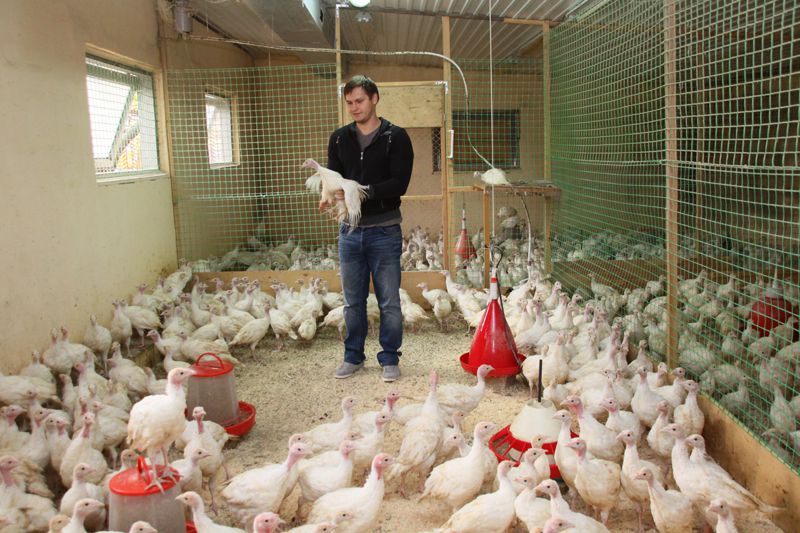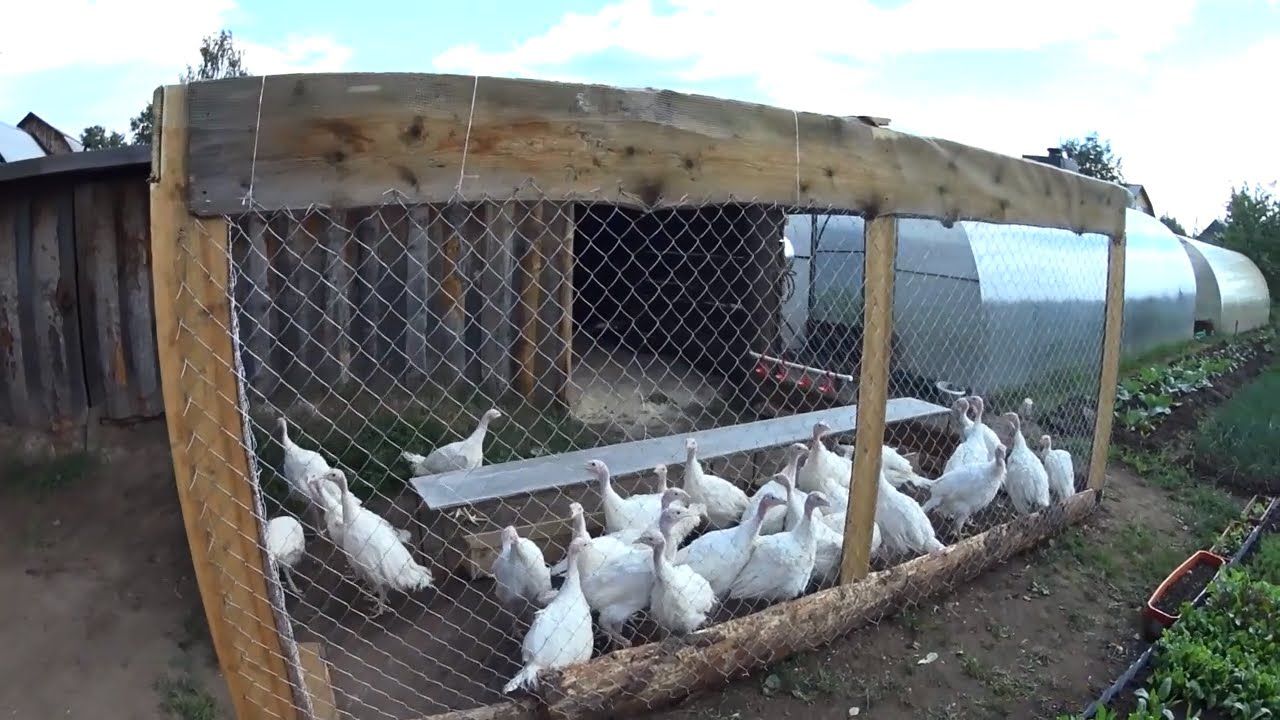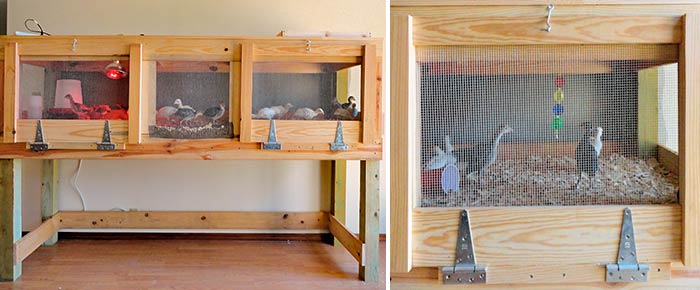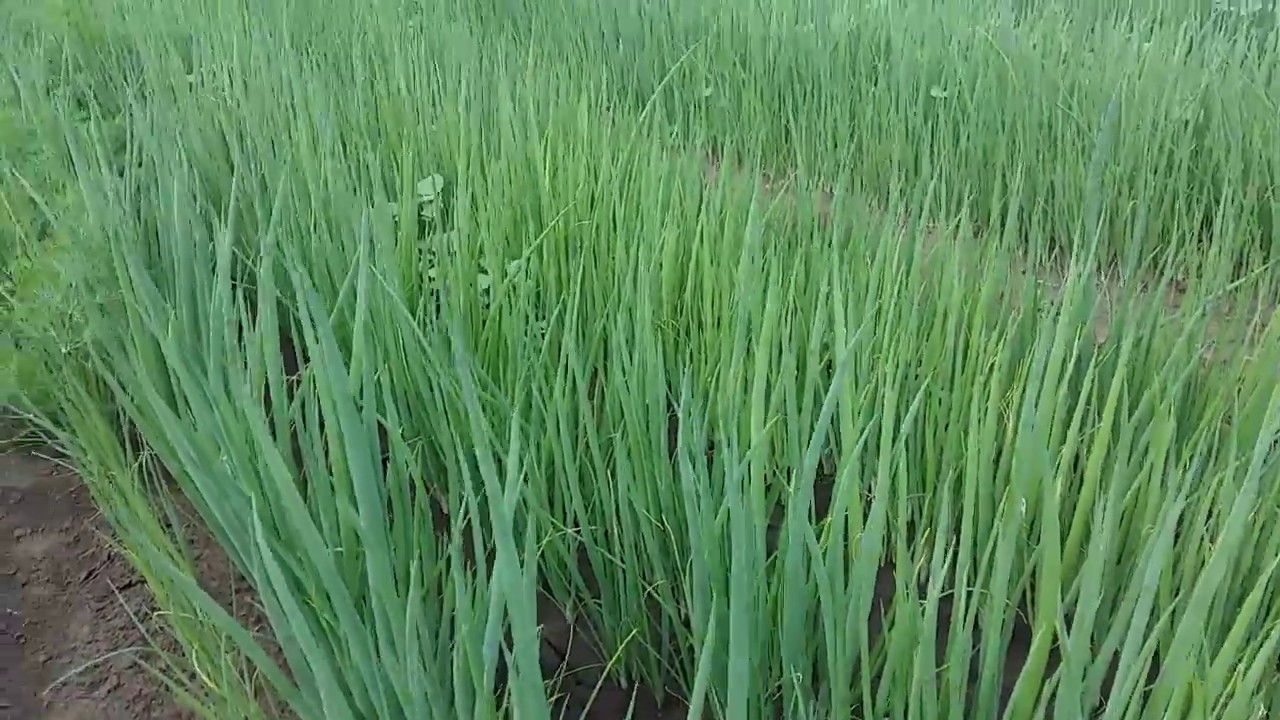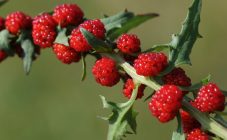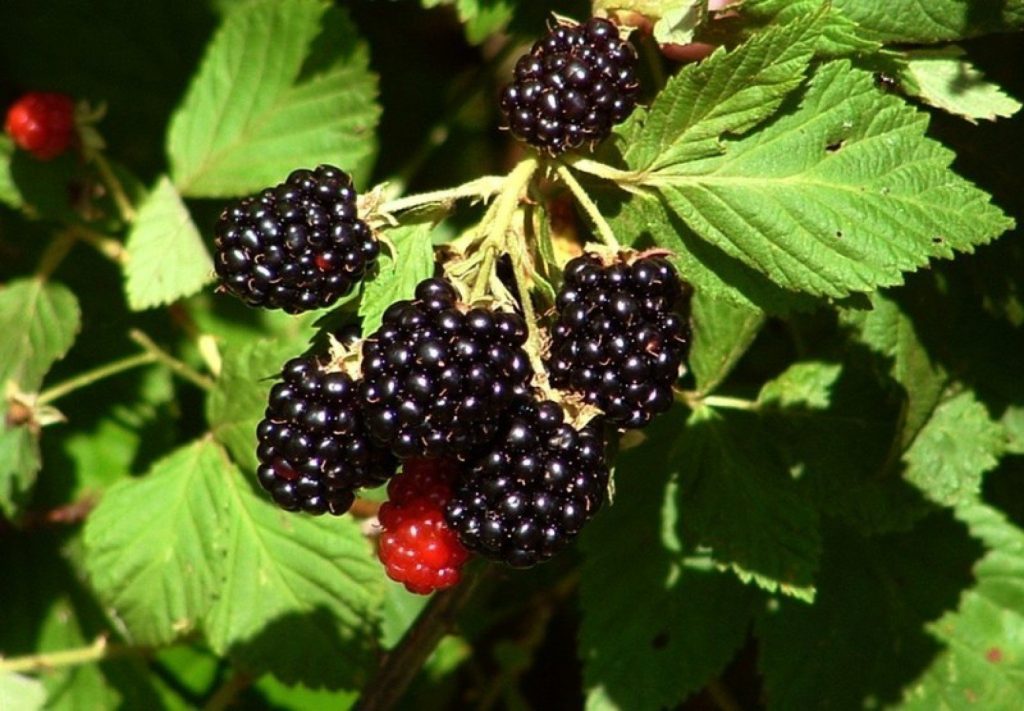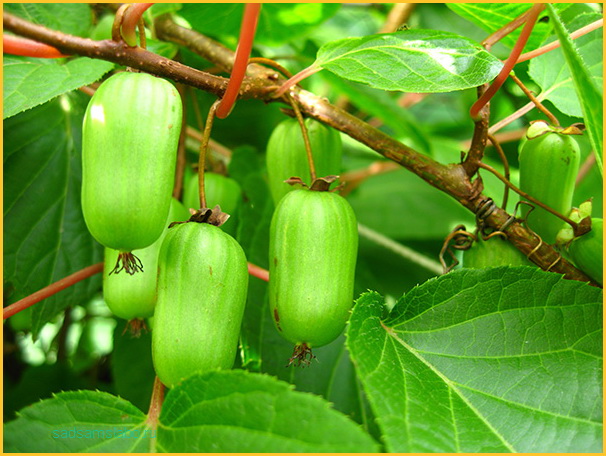Content:
Turkeys are valued for tasty, healthy, dietary meat. An adult with normal growth and development gains a large muscle mass. Everyone has the opportunity to independently raise turkey poults from the first days of life. There are some nuances in how to care for turkeys.
Growing turkey poults
Growing turkeys at home is possible for novice farmers. First you need to build a turkey house.
There are several conditions that the future "house" of turkeys must meet:
- 24-hour lighting (the first 10 days are mandatory, then the lighting time can be reduced, depending on the physical development of the chicks);
- The room should be warm, it is important to strictly adhere to a certain temperature regime, which will vary with the age of the turkey poults;
- Lack of draft;
- Ventilation. Ventilation can be arranged in the place where the ceiling beams pass;
- Installation of perches, drinkers, feeders. The perch is attached at a height of 0.5 m from the floor level, the thickness of the crossbar is made from 8 cm;
- Floor mat. You can use straw, sawdust, or peat;
- Cups with a mixture of sand and ash. This will avoid the development of insects parasitizing on birds;
- Establish nests for females. This stimulates egg production;
- Area calculation. If it is cramped in the turkey house, then the birds will feel uncomfortable, problems with growth and development may arise (for 2 individuals there should be 1 square meter of the area of the room);
- You can make and install brooders yourself, which will replace the hatching chicks with a brooder.
Near the turkey poultry, it is advisable to provide a site for walking in the warm season and fence it off with a fence. The recommended height of the fence is from 1.5 m.
Newly hatched poults need special care. For them, it is necessary to provide certain conditions, to create a comfortable microclimate. To do this, you will need to build a ventilation and room heating system.
The optimum temperature in the turkey house is set, depending on the age of the young.
Turkey poults care and rearing from 0 to 4 months:
- The first 4 days indoors are maintained at 35-37 degrees;
- On the fifth day, the temperature is reduced to 30-35 degrees;
- After 10 days, a comfortable temperature for chicks is considered to be 27-29 degrees;
- From 15 to 20 days, the temperature is set to 23-25 degrees;
- From 21 to 36 days, the temperature is set in the range of 20-22 degrees. Under such conditions, already adults grow.
Lighting plays an important role. For the first 7-10 days, 24 hour lighting is required. Light helps young chicks find water and food. As the chicks grow and develop, the time and intensity of light will decrease.
In a turkey house, the level of humidity is monitored. The optimum humidity for the first 2 weeks is 70-75%, then 65%.
It is imperative to maintain order in the room. Before settling the young, the turkey poultry is disinfected with special preparations.The drinking cups are processed: metal bowls are singed, wooden products are well sanded with sandpaper.
Conditionally, the breeding of turkey poults is divided into three stages:
- A period of 25-30 days after hatching. Time is characterized by active growth and development of chicks. At this stage, turkey poults need to be given increased attention. It is important to maintain the optimal temperature regime, according to the age of the young, lighting, diet, control of air humidity in the room;
- From 1 to 4 months, turkey poults develop a musculoskeletal system, physical indicators, and muscles. At the same time, the laying of the future egg production of the turkey takes place. Turkeys should have a balanced diet containing essential vitamins and minerals;
- The last stage starts from 4 months until slaughter. In adults, weight is laid. The diet should include proteins, fats, and carbohydrates to build muscle.
Content methods
At home, there are several ways to raise turkey poults, bird keeping methods. Therefore, the farmer can choose the most suitable one for himself.
What you need to focus on when choosing a content method:
- Planned number of individuals;
- Requirements for caring for turkeys;
- Breed of turkey poults;
- The location chosen for the poultry house.
For breeding meat breeds (Big broiler), bronze turkey, convector or crosses, floor-type maintenance is recommended. If rabbits are bred on an industrial scale, then a cage technique can be used.
Brooders and cages
Brooders are used when transplanting newly hatched chicks. These are cells in which an automatic system for regulating temperature, air humidity and lighting is provided. In fact, a brooder can replace a brooder, if the parameters are correctly set.
Cages can be ordered from specialty stores or made by yourself to save money. By type of construction, they are divided into: single-tiered and multi-tiered. If you plan to breed a large number of individuals, then use multi-tiered cages. Young animals are placed on the upper floors, large adults live on the lower tier.
Unlimited walking
Youngsters are ready to walk in warm weather at the age of 2 months. Before being withdrawn into open pens, turkeys should gradually introduce green grass into their diet.
The area for walking will need to be fenced off with a mesh fence. The place should be slightly elevated, dry, without drafts. It is desirable that thick grass, clover, alfalfa, peas grow on this site.
On the walking area, it is necessary to install portable wooden houses, drinkers.
After summer, adult turkeys are prepared for the transition to an "autumn" diet. Beet tops, cabbage, carrot, pumpkin leaves are added to the feed.
Outdoor content
For home breeding turkey poults, floor keeping is the standard way of building a house. The required floor space is calculated for each age of the birds.
Keeping turkeys in outdoor cages:
- Young animals under the age of 50-60 days can be populated at the rate of 10 individuals per 1 sq. m;
- Turkey poults at the age of 3-4 months are seated at 6 heads per 1 sq. m;
- Adults older than 4 months populate 2 individuals per 1 sq. m.
The poultry house has perches, nests, drinking bowls, and automatic heating equipment. The floor is lined with straw or sawdust.
Mesh floors
For the manufacture of cells with mesh hollow, a galvanized metal mesh with 2 mm thick rods and small cells is required.The mesh is pulled over the frame, supports are installed, retreating 50 cm from the ground level. The frame can be wooden or metal. After that, a reinforced film is fixed on the cage.
Benefits of using mesh floors:
- You can place several times more turkeys than with simple outdoor housing;
- The ability to create comfortable conditions for young animals.
Feeding Tips
The first feeding of the young is offered 12 hours after hatching. Previously, chicks are not fed, as they are still weak and will not be able to peck food. Missing first feed time can lead to chicks pecking on the floor litter.
Chicks that are in a cage without a brood should be taught to peck. To do this, you need to knock your finger on the bowl of food. The first days of the chicks have poorly developed vision. They find food in bright blotches. Therefore, for the first time, boiled chicken yolk is added to the proposed food for color.
To teach a little turkey to drink, you need to lower the beak into a cup of water and wait until he drinks the first drop. In a few days, the poults will learn to eat and drink on their own.
A balanced diet will ensure the normal development of the young.
Recommended diet for chicks from zero to two weeks (gramme is designed for 1 individual):
- Boiled eggs - suitable for feeding from the first day of life, 1 egg for 10 chicks;
- Kormosmes - include in the diet from the second day of life, starting from 1 year to 12;
- Low-fat or slightly fatty cottage cheese - give young animals on the second day of life, the first portion - 0.5 g, then increase to 6 g;
- Wheat bran - from the second to the sixth day, 4 g each;
- Reverse - give to drink on the third day after hatching;
- Fish oil, yeast - offered to turkeys on the 5th day of life;
- Compound feed - suitable for weekly chicks, 2 g to 14 g.
Diet for turkeys 2 to 8 weeks old:
- Compound feed;
- Fish fat;
- Reverse;
- Bone flour;
- Greens;
- Cottage cheese;
- Feed mixture;
- Boiled eggs.
How to water turkey poults from 0 to 4 months
The cages must have access to fresh and clean water. It is advisable to use slightly warm, purified water. Do not take water from a rain collection or reservoir, this can provoke the spread of infection and the death of young animals.
As a preventive measure, once a month, you can make a weak solution of potassium permanganate and add it to the sippy cup. The necessary vaccines and vitamins are fed into the water and soldered with a solution of chicks.
Caring for small turkey poults from zero to four months is about creating a comfortable environment and proper feeding. The main rule of successful breeding of turkey poults at home is cleanliness, especially for young animals. Cleaning is done every week. The litter should be changed every four days. Drinking cups and feeding containers are washed daily.
The room must be ventilated around the clock. Air stagnation and exceeding the recommended humidity level should not be allowed. In the cold season, it is important to monitor the health of the heating system and avoid sudden temperature changes in the cells. Adding antibiotics and vitamins to the water unnecessarily can harm the chicks.
Growing turkey poults is within the power of inexperienced farmers. At first, you will need to closely monitor the growth and development of the chicks. When using the recommendations for the construction of a turkey poultry, on the issues of care, feeding the young, growing turkey poults at home is also suitable for novice farmers.
